Vintage animal photography offers a poignant glimpse into the past, capturing moments in time when humans and animals interacted in ways that may seem foreign or even romantic to the modern viewer. These images serve as compelling historical records, highlighting the diverse ways that animals have been woven into the fabric of human life. From pastoral scenes of farm life to the exoticism of untamed wildlife, each photo tells a story from an era that now lives only in these preserved snapshots.
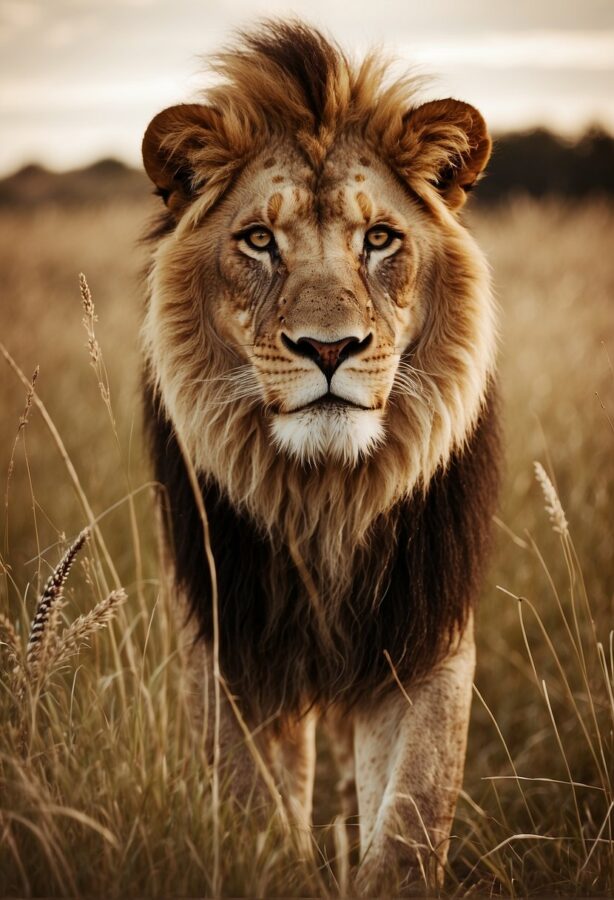
The appeal of vintage animal images lies not just in their aesthetic value but also in the rich narrative they provide. An antique engraving of a cow, for example, harkens back to 1844, when such illustrations served an educational purpose in the ‘Systematischer Bilder-Atlas zum Conversations-Lexikon’, an encyclopedic repository of science and art. The meticulous detail captured in the engraving reflects an era when every line and shading counted toward the collective understanding of bovine anatomy and livestock.
Creative spirits find inspiration in the sepia tones and grainy textures of vintage animal pictures, breathing new life into them by incorporating these visuals into modern projects. Each picture, whether it’s a charming scene of a child with her pets or the illustration of an exotic parrot, speaks to the nostalgia that these images evoke. The animals portrayed in them, once common sights in their respective times, can now be admired for their timeless beauty and the sense of connection they provide to a world that once was.
The Regal Riding Elephant
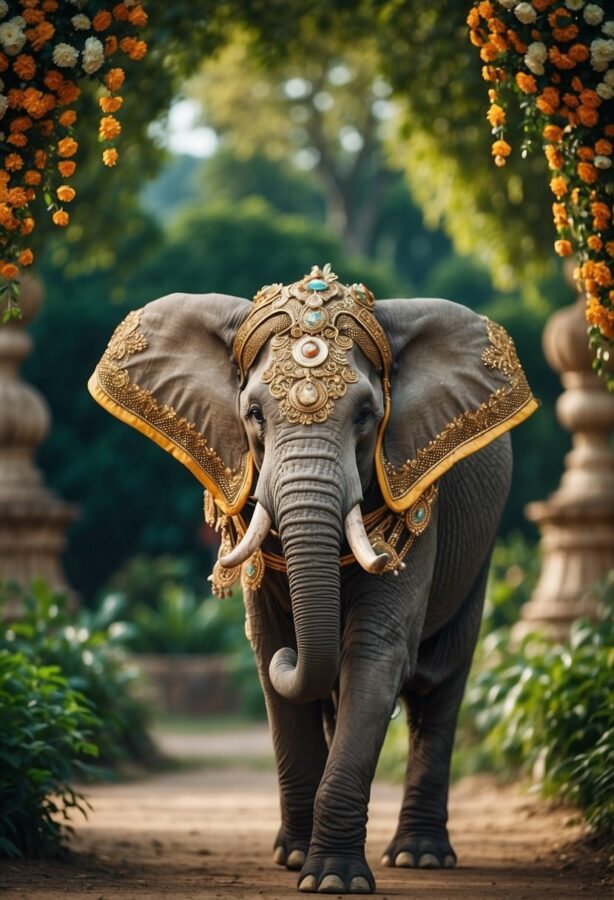
In the sepia-toned world of vintage photographs, the image of an elephant with a seat on its back has a certain nostalgic resonance. Once a common sight in Asian countries, these majestic creatures were not just beasts of burden but also symbols of regal power and grandeur.
An early 20th-century photograph captures an elephant from the American vaudeville stage, poised and patient as it balances on a specially constructed tricycle. The animal’s intelligent gaze hints at a story beyond the snapshot, a narrative woven into the fabric of cultural entertainment from times past.
- Illustrations: Enhanced with fine details, illustrations from the 1800s show the magnificent Asian elephant, often with intricate howdahs (carriages) on their backs for riders. Such royalty-free images now serve as a testament to a bygone era.
- License: Today, these historical images and illustrations are available under royalty-free licenses, preserving their heritage and allowing their continued appreciation.
Characteristic | Description |
|---|---|
Origin | Asian countries |
Usage | Regal carriers, public entertainment |
Contemporary Use | Royalty-free vintage illustrations & photos |
While most of these gentle giants are now protected, the visual record of their history continues to enchant. The viewer is transported to an age where the relationship between humans and animals was showcased in grand spectacles and private moments alike. Vintage animal photos serve as a window into the lives of these elephants and the people who stood by them, a homage to the regality and quiet strength that these creatures embody.
See Related: Horse Psychology Secrets: Mastering Equine Communication
The 1920s Show Horse
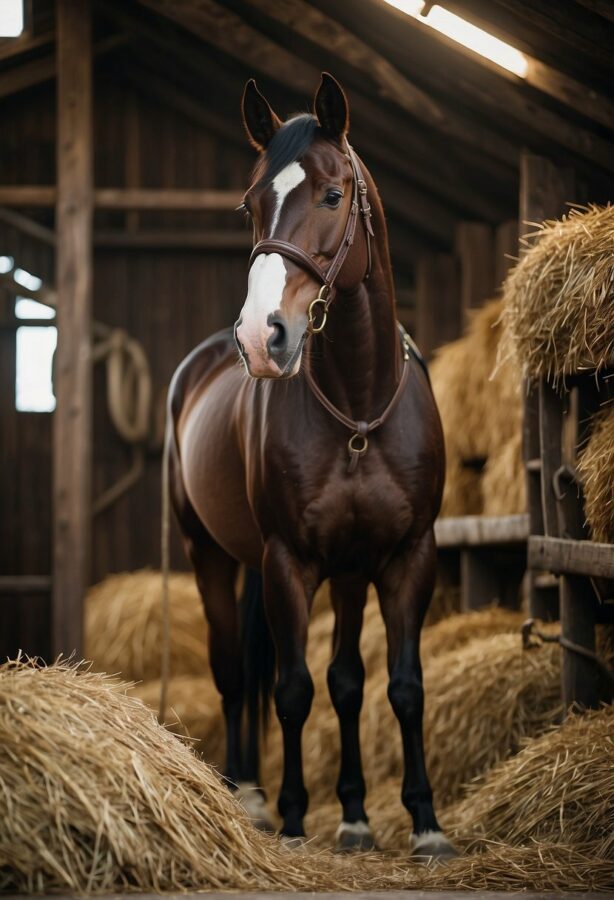
During the 1920s, show horses were a source of fascination, often capturing the essence of class and sophistication. They were the subject of various exclusive events, where they not only displayed their grace but also their role in high-society activities.
The Aristocratic Fox Hunt
The aristocratic fox hunt was a quintessential scene of the 1920s, evoking images of the elite on horseback. Vintage photographs often depict the riders in refined hunting attire alongside their impressive horses. These horses were as much a portrait of the era’s affinity for luxury as they were participants in the hunt.
Historical Context:
- Hunt Participants: Mostly upper class
- Attire: Red or black coats, white breeches, black boots
The Gentleman’s Falcon
Falcons, trained for hunting, became a symbol of the gentleman sportsman when perched alongside their equestrian companions. Images of these scenarios typically show the horse-and-rider teams ready for a day’s pursuit, with the falcon as an esteemed and exclusive addition to the tableau.
Historical Context:
- Falconry: An ancient sport adopted by the nobility
- Portraiture: Often used to show status
Vintage photographs of show horses from the 1920s are treasured for their ability to transport the viewer back in time, to a period where animals played a significant and opulent role in social affairs.
See Related: Creating Harmony: 10 Animal Photo Collage Ideas
The Victorian Parlor Cats
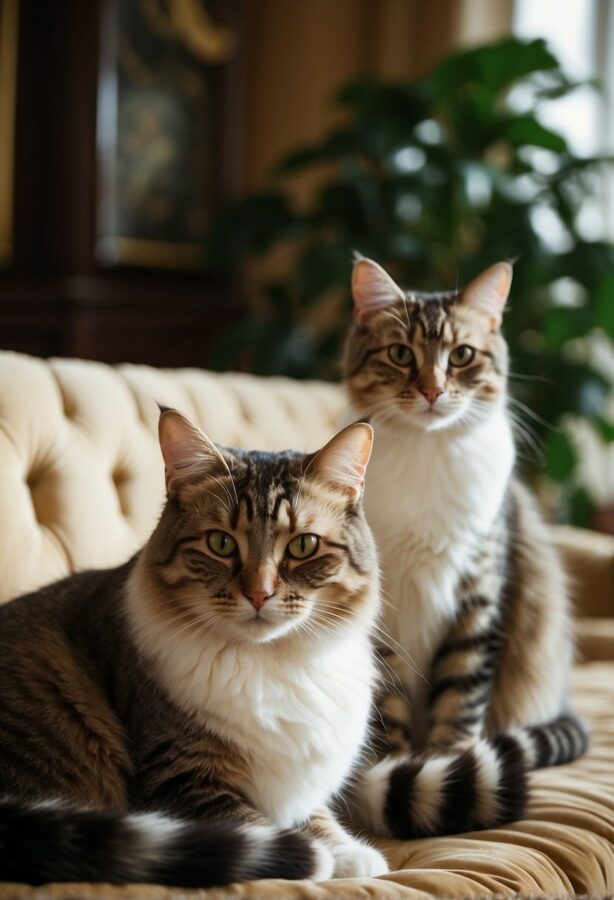
In the warmth of a Victorian parlor, refined ladies often found delightful companionship in their feline friends.
The Fashionable Ladies and Their Swans
One might find in the well-appointed parlors of the 19th century, elegant ladies whose affections for their cats were immortalized in illustrations and photographs. These cats, often depicted as regal as their surroundings, served as fitting subjects for vectors and artistic works that now serve as a window into the past.
One could observe a kitten with a bow, sitting patiently by a vase of fresh flowers, or a poised cat captured in a serene pose beside their doting owner. These images were not just a testimony to the cats’ place in Victorian society but also a cherished possession free for present-day admirers to gaze upon, evoking a nostalgic charm.
See Related: Understanding Why Dogs Tuck Their Paws: The Psychology Behind This Behavior
The Stately Stud Dogs
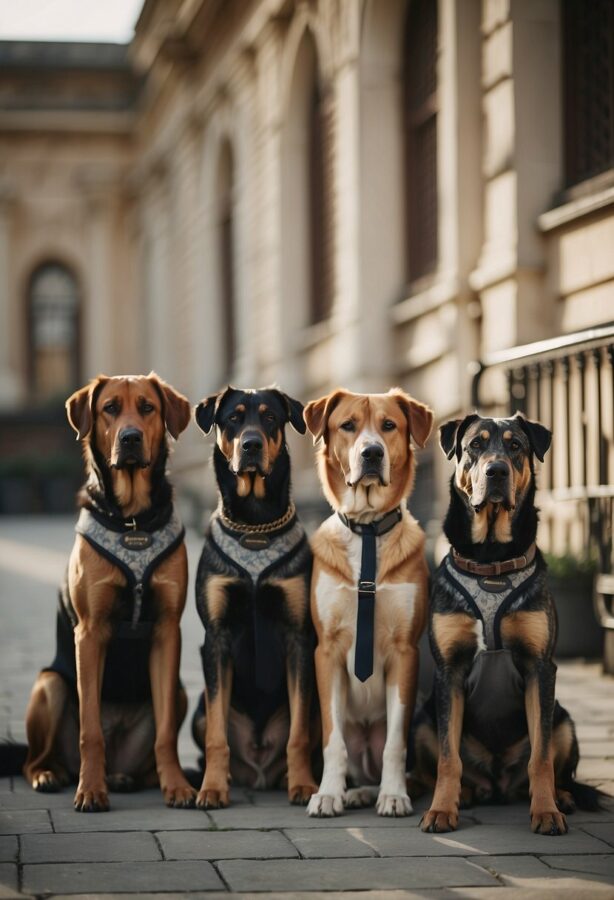
In the realm of vintage photography, there exists a niche that captures the regal posture and esteemed character of stud dogs. These noble canines, often represented in the archives of iStockphoto LP and similar online repositories, serve as visual historical records of the role dogs have played within the community.
A Glimpse into the Past:
- Labrador Retrievers ruling as America’s most treasured companions alongside their humans.
- The quiet dignity of Pointers standing amidst pastoral scenes, reflecting their trademark poise.
Vintage photos of stud dogs showcase the meticulous breeding and pride taken in canine lineage. They embody an era where the photograph was a treasured keepsake, a window into the meticulous care of dog breeding, and the prominence placed on particular attributes and pedigrees.
Tradition and Legacy:
- Images often featured in iStock’s design resources highlight the dogs’ robust physique.
- Photos chronicle the shift in dog roles from work to companionship.
Each photograph serves as a historical chapter, revealing the evolving connection between humans and their dogs, immortalizing the stud dog’s inherent stateliness. Vintage photographs, with their sepia-toned allure, invite viewers to appreciate the cultural tapestry to which these dogs have been inextricably woven.
Preservation of Heritage:
- Stud dogs of yesteryears, captured in still life, are as much about lineage as about the aesthetic.
- These images stand as a testament to the communities that cherished and nurtured these animals.
The collection of vintage photographs honors the enduring stature of stud dogs, celebrating their role in crafting today’s canine companions. Each image, savored for its nostalgic essence, tells a story of tradition, respect, and an unwavering bond between humans and their faithful, four-legged friends.
The Classic Farm Scene
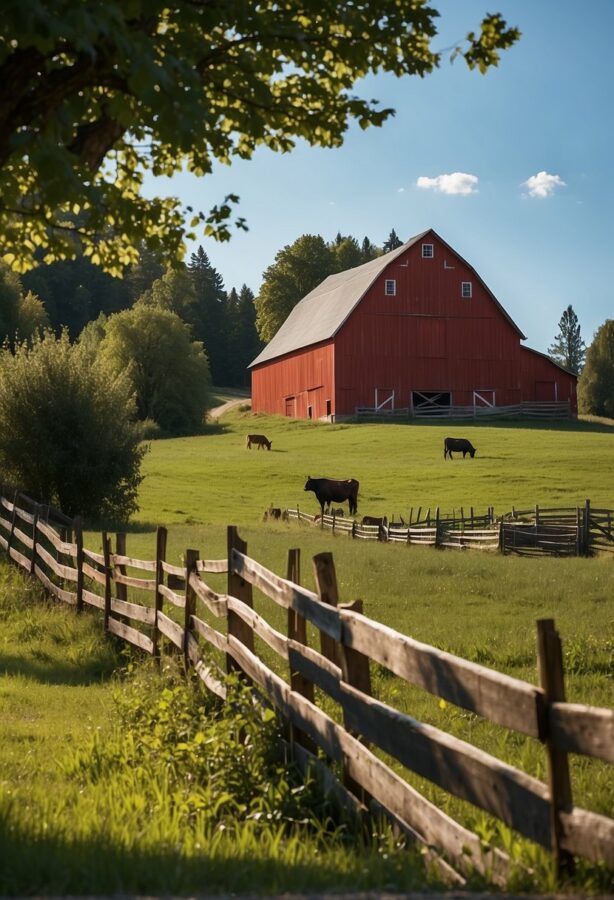
Vintage farm animal photography provides a window into pastoral life of the past, encapsulating the timeless connection between humans and animals.
The Early Zoo Encounter
They reveal the early experiences of zoos, where people first interacted on a grand scale with a variety of animals beyond the familiar farm livestock. One can imagine the stir a photograph of the first tiger in a zoo would create—stripes and majesty captured in black and white.
Giraffes towered gracefully over onlookers, the peculiar elegance of their long necks documented forever in sepia tones. A family might be seen marveling at the exotic birds on display, their vibrant feathers immortalized despite the monochrome. The candid laughter of children observing a chimpanzee’s antics, frozen in time, reflects how these encounters were cherished as novel and delightful experiences.
These images often contained an editorial or news-like quality, important for the dissemination of knowledge and entertainment at a time when moving pictures—videos and music—were not as readily available.
See Related: Permanent Impressions: A Guide to Wildlife Sleeve Tattoos for Ladies
The Natural Wildlife
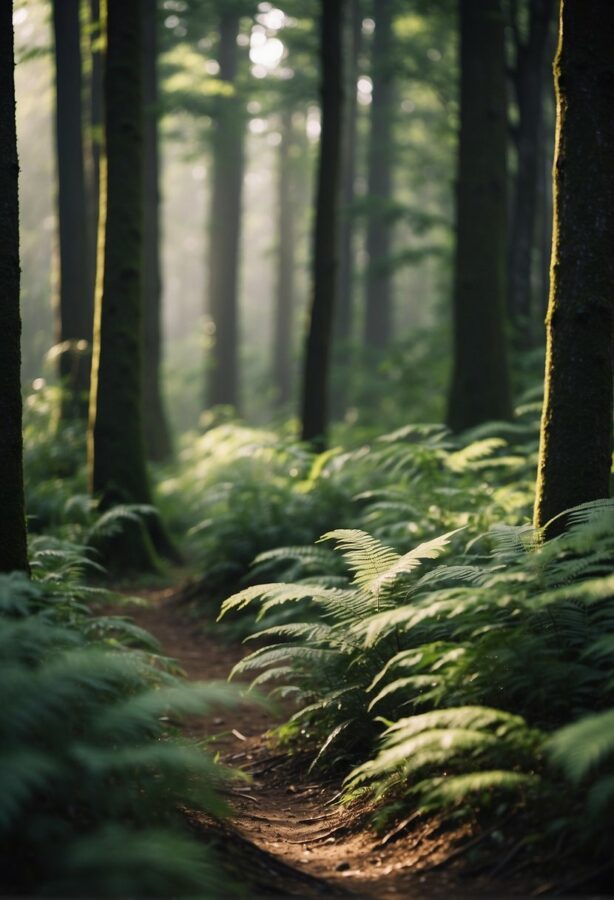
Vintage animal photography often evokes a sense of nostalgia, transporting viewers back to a time when the natural world seemed more untouched and wild creatures roamed more freely. These images are prized for their historical value and the rich, often sepia-toned color palette that distinguishes them from modern high-resolution photography.
The Noble Brown Bear
The vintage photographs of the brown bear capture the majestic creature in various forms of repose and action. In a time before color film was widespread, photographers conveyed the bear’s powerful presence through grainy black and white images, highlighting dense, dark fur against the lush green backdrop of its forest habitat. The demeanor of the brown bear in these photos oscillates between royal authority and gentle solitude, a reflection of an era when wildlife photography was as much about discovery as it was about documentation.
The Swift Zebra
Zebras have long fascinated photographers with their striking black-and-white striped patterns—a natural contrast that required no color film to appreciate. Early wildlife photographers, often journeying on arduous safaris, would frame these swift animals among the savannas, capturing both the dynamic movement of herds and the serene moments of grazing. Vintage images of zebras are cherished not only for their aesthetic allure but also for the window they offer into past ecosystems, places where these animals once roamed in greater numbers and with fewer threats.
The Sleek Cheetah
A vintage photograph of a cheetah in motion is a testament to the early photographers’ skill in capturing speed and grace. With limited technological resources and film that offered low resolution by today’s standards, these images nonetheless manage to freeze a moment of pure agility.
The sleek cheetah, often photographed in solitude, appears almost painted against the golden savanna, its spotted coat a blur of movement in a still, silent background. The rarity of such moments, immortalized in sepia or monochrome, adds to the nostalgic value of these animal portraits.
See Related: